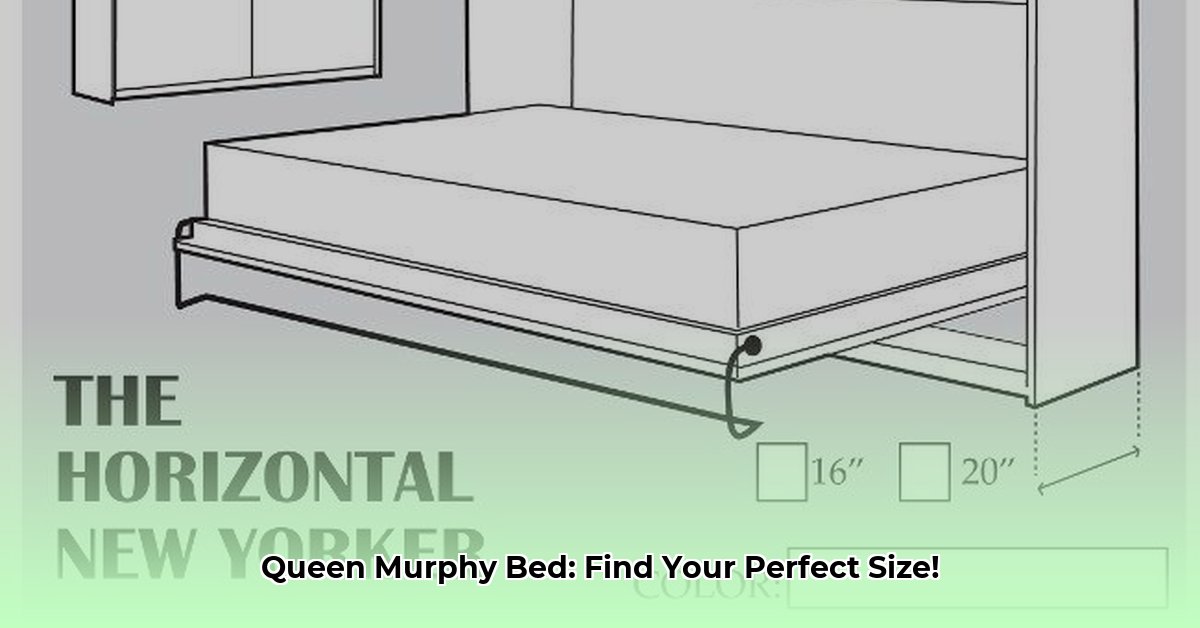Finding the Perfect Fit: Queen Murphy Bed Dimensions
A queen Murphy bed offers a smart solution for maximizing space. This guide provides the essential dimensions and practical advice you need to choose the perfect Murphy bed for your home.
Vertical vs. Horizontal: Choosing the Right Orientation
Murphy beds typically come in two styles: vertical (folding down from the wall) and horizontal (folding out sideways). Your room’s layout will determine which orientation is best.
Vertical Murphy Beds: Ideal for High Ceilings
Vertical Murphy beds are excellent for rooms where floor space is limited. They maximize vertical space, making them perfect for smaller apartments or rooms with high ceilings.
| Measurement | Typical Range (inches) | Considerations |
|---|---|---|
| Height (Closed) | 87-89 | Ensure sufficient ceiling clearance. |
| Width (Closed) | 64-68 | Standard queen width. |
| Depth (Closed) | 18-21 | Impacts how much space the bed occupies when closed. |
| Projection (Open) | 85-87 | Ensure ample clear floor space in front of the bed. |
| Side Clearance | 30-36 | Allows comfortable access. |
Horizontal Murphy Beds: Optimizing Wall Space
Horizontal Murphy beds are a smart choice for rooms with lower ceilings or wider walls. They utilize wall space efficiently, maintaining floor space.
| Measurement | Typical Range (inches) | Considerations |
|---|---|---|
| Height (Closed) | 68-70 | Often lower than vertical Murphy beds. |
| Width (Closed) | 85-90 | Wider due to sideways orientation. |
| Depth (Closed) | 16-20 | Affects maneuverability around the bed. |
| Projection (Open) | 65-68 | Shorter projection than vertical beds, ideal for narrow spaces. |
| Side Clearance | 30-36 | May be more limited than with vertical beds. |
Mattress Selection: Thickness and Type
Most queen Murphy beds accommodate mattresses up to 12 inches thick. Memory foam and latex mattresses are popular choices due to their flexibility and support, conforming well to the Murphy bed mechanism. Some research suggests that a 10-inch thickness might be ideal for optimal performance and longevity. Always confirm mattress compatibility with the specific Murphy bed model.
Integrating Side Cabinets: Storage and Style
Side cabinets can enhance both storage and the overall aesthetic. Common widths are 18, 24, or 30 inches, with a typical depth of 16 inches and height corresponding to the bed frame. Remember to add these dimensions to your overall space calculations.
Planning Your Space: Essential Measurements
Before purchasing, meticulously measure your room. Account for ceiling height, floor space, and any potential obstructions (e.g., ceiling fans, light fixtures). Visualize the bed’s movement as it opens and closes.
Key Considerations:
- Uneven floors: May require adjustments during installation.
- Thick carpeting: Can affect clearance and operation.
- Ceiling fixtures: Ensure adequate clearance.
- Existing furniture: Plan for sufficient space around the bed.
Pro Tip: Take photos of your space from various angles to better visualize the opened bed’s impact on the room.
Global Standards: Sizing Variations
Murphy bed sizes can vary internationally. If you’re outside the U.S., consult local guidelines and measurements before purchasing.
Final Thoughts: Making the Right Choice
Choosing the right Murphy bed involves careful consideration of your room’s dimensions, lifestyle needs, and aesthetic preferences. Accurate measurements and thoughtful planning are crucial for a successful installation and seamless integration. This guide provides a comprehensive overview, but always refer to the manufacturer’s specifications for your chosen model. With the right planning, your Murphy bed can transform your living space, offering both functionality and style.
- Backsplash For Gray Cabinets: Choosing the Right Backsplash Style - December 13, 2025
- Gray And White Backsplash: Ideas For Timeless Style - December 12, 2025
- Gray Kitchen Backsplash Ideas: Find Your Perfect Gray Tile - December 11, 2025









